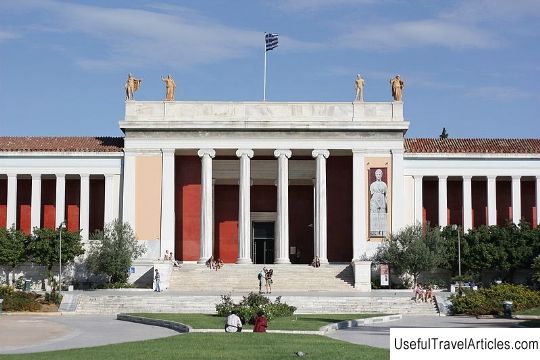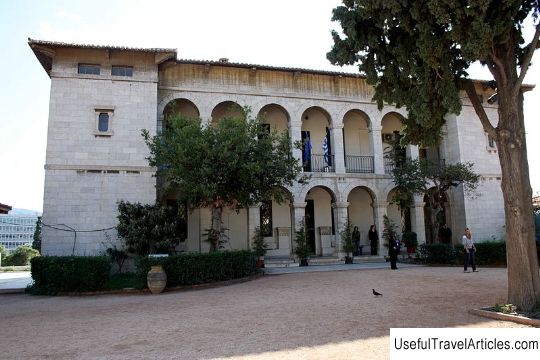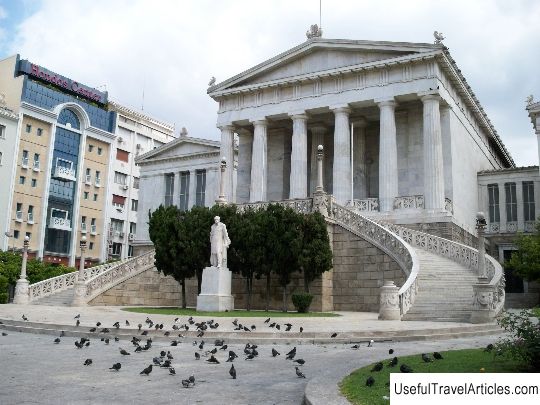National Archaeological Museum description and photos - Greece: Athens
Rating: 8,5/10 (876 votes) 
National Archaeological Museum description and photos - Greece: Athens. Detailed information about the attraction. Description, photographs and a map showing the nearest significant objects. The name in English is National Archaeological Museum. Photo & DescriptionThe National Archaeological Museum in Athens is the largest archaeological museum in Greece and one of the most famous museums in the world. Its richest collection will acquaint its guests with the history of the development of ancient Greek culture and art through the example of various eras and civilizations, starting from prehistoric times. The National Archaeological Museum was officially founded in 1829 and was originally located on the island of Aegina. Subsequently, it was decided to transfer the archaeological collection to Athens, which by that time had been proclaimed the capital of the Kingdom of Greece. The construction of the new museum began in 1866 and was completed only in 1889. The building was erected in the neoclassical style characteristic of Europe at that time. Over the next 100 years, the museum building was repeatedly rebuilt and expanded, however, managing to create a harmonious architectural ensemble and preserve the original style. The collection of the National Archaeological Museum contains unique ancient artifacts found during archaeological excavations on the islands of Santorini and Delos, in the famous Mycenae and Tiryns, in Sparta and Thebes, in Pylos and Athens, as well as in many other parts of Greece and beyond. The museum exposition presents a variety of ceramics, bronze, ivory and stone, gold and silver jewelry, sculptures and figurines, weapons, coins, wall frescoes and much more. Among the most interesting and valuable exhibits of the museum worth noting is the golden burial mask of Agamemnon, found by Schliemann at Mycenae (1600 BC), the Antikythera Mechanism (a mechanical device used to calculate the motion of celestial bodies, 150-100 BC) and a clay tablet depicting the Eleusinian Mysteries (370 BC). BC). No less interesting are the Dipylon amphora (8th century BC), unique ancient frescoes from the island of Santorini (15th century BC), wood panels from Pitsa, the Lemnos stele (6th century BC). BC), the amphora of Nessus (7th century BC), the Mycenaean "Vase of Warriors" (12th century BC) and much more. A number of statues made of bronze and marble also deserve special attention - the bronze "Ephebus from Antikythera", the marble Kuros from Anavyssos (540-515 BC), the "Marathon youth" (4th century BC). ), "Poseidon from Cape Artemision" (460-450 BC), marble kouros Sounion from Naxos (600 BC), "The Horseman from Cape Artemision" (2nd century BC), etc. The National Archaeological Museum also owns an excellent library - more than 20,000 volumes (among which there are quite a few rare editions) on archeology, art, philosophy and religion, an impressive photo archive, periodicals, etc. The personal diaries of Heinrich Schliemann are also kept in the museum. In the southern wing of the museum building there is the Epigraphic Museum, which is a separate structural unit. Its impressive collection, considered one of the finest of its kind, has over 13,500 inscriptions.           We also recommend reading Pakostane description and photos - Croatia: Biograd Topic: National Archaeological Museum description and photos - Greece: Athens. |




